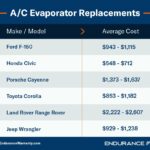Bubbling paint on a freshly painted car can be a frustrating sight. This issue, often appearing within a few months of a new paint job, can indicate underlying problems that require attention. While corrosion might be a culprit, moisture and debris trapped beneath the paint surface are also common causes. Understanding the reasons behind bubbling paint is crucial to addressing the problem effectively.
Understanding the Causes of Bubbling Car Paint
Bubbling, also known as osmotic blistering, occurs when moisture penetrates the paint layers. During the application process, tiny water droplets can become trapped beneath the paint surface. As this moisture tries to escape, it creates bubbles or blisters, marring the smooth finish. Several factors contribute to this phenomenon:
Environmental Factors and Application Techniques
- High Humidity: Applying paint in hot, humid conditions increases the likelihood of moisture entrapment.
- Excessive Paint Layers: Applying thick coats of paint too quickly can trap moisture and solvents, preventing proper drying.
- Prolonged Drying Time: Slow drying allows debris and moisture to settle on the paint surface and become embedded.
Surface Preparation Issues
- Inadequate Surface Cleaning: If the surface isn’t thoroughly cleaned and dried before painting, trapped contaminants can lead to bubbling. For example, if paint is applied over bare stainless steel that has been exposed to moisture and debris.
- Insufficient Drying Time Between Coats: Failing to allow sufficient drying time between primer, base coat, and clear coat can trap solvents and cause bubbling.
Material Quality
- Low-Quality Paint Thinner: Using inferior thinners can disrupt the paint’s chemical composition and contribute to bubbling.
Differentiating Between Bubbling and Rust
While bubbling can be a sign of rust, it’s important to distinguish between the two. Rust, or corrosion, occurs when moisture reacts with exposed metal, creating iron oxide. This often results in a bubbling texture concentrated in a specific area, usually where the paint has chipped or been damaged. Unlike moisture-induced bubbling, which can appear across the entire surface, rust-related bubbling is localized. A bubbling texture, particularly in one area, often signals rust formation.
Other Causes of Paint Imperfections
Bubbling isn’t always caused by moisture or rust. Other factors can create similar visual imperfections:
Application Errors
- Excessive Paint Application: Applying too much paint too quickly or standing too close during application can trap solvents or create air pockets. This results in pinholes or craters rather than the larger blisters associated with moisture.
- Solvent Pop: Trapped solvents eventually escape, leaving behind small craters in the dried paint film.
Paint Degradation
- Delamination: Prolonged sun exposure can cause the clear coat and underlying paint layers to break down. This leads to peeling, bubbling, and flaking.
Addressing Bubbling Paint Issues
Regardless of the cause, bubbling paint requires attention. Often, the most effective solution is to remove the affected paint and refinish the panel. Proper surface preparation, including thorough cleaning and drying, is crucial. Utilizing high-quality paint materials and adhering to recommended application techniques can minimize the risk of future bubbling. If rust is present, addressing the corrosion before repainting is essential.

